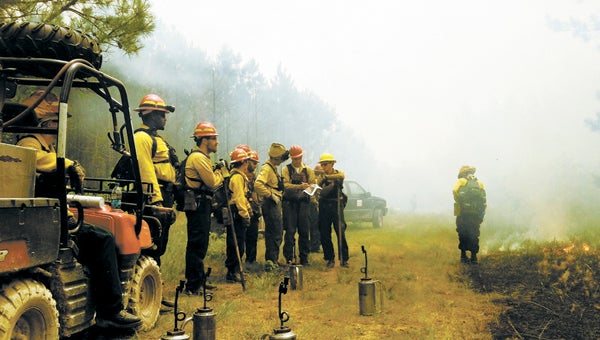Volunteers prepare swamp for fire season
Published 9:30 pm Thursday, June 14, 2012

AmeriCorps volunteers undertake a prescribed burn near Suffolk in the Great Dismal Swamp on Monday, as part of efforts to reduce the risk of devastating wildfires.
Young volunteers with national community service organization AmeriCorps have recently finished a series of prescribed burns in the Suffolk part of the Great Dismal Swamp.
U.S. Fish and Wildlife Service forester Steve Hubner, the project sponsor, said he has been assigned 40 AmeriCorps volunteers for controlled burns and fire suppression work in the area from March to November.
“What we are out doing is controlled burns or responding to wildfires,” Hubner said, adding that about three controlled burns were done in the Suffolk part of the swamp before conditions grew too hot and humid, ending the season for prescribed burns.
The prescribed burns “reduce leaf litter or help restore plant or animal systems that depend on wildfire,” he said.
Volunteers were involved in other activities as well, including planting trees.
Hubner receives volunteers in groups of eight, which rotate every six weeks. “If we find out we need more than eight, I can always call up AmeriCorps and get more,” he said.
Before getting down to work, the volunteers, who progress through what Hubner describes as a rigorous selection process, get the same wildfire training government employees receive.
“Because it’s a high-risk environment, they learn the importance of understanding instructions … and totally appreciate the value of communication and whether it’s understood,” Hubner said.
“They get to see how demanding the job (of a forester) can be — long days walking through the woods carrying the safety gear we carry — 10, 12, 14 hours at a time.”
Many volunteers end up in jobs involving wildfire avoidance and suppression, he said. “Since 2006, I’m probably tracking 20 that have started in wildfire (careers) because of the AmeriCorps experience,” he added.
Taking into account those in surrounding areas, the volunteers have probably been involved in 12 prescribed burns this season, he said.
“Some of the burns in the Great Dismal Swamp are strictly for resource management,” he said.
“But there are some along the Suffolk Escarpment where pine stands we routinely burn every three to five years … [that] are more likely to burn from a match or cigarette butt out the window of a car.”
Jessica Johnson, 24, of Montague, Mich., was part of the first team at the swamp, from mid-March through the end of April.
“My reason for joining was to really give back to the community,” she said. “It’s definitely long hours and hard work, but while you are doing it you don’t think about that, you think you have got to do it for the ecology and wildlife.”
Emily Tiffany, 23, of Minneapolis, Minn., said she was promoted to a leadership position for one of her rotations. “I kind of got a promotion,” she said.
“It was tougher than I thought, because I started off as friends [with other team members], and I had to kind of boss them around … and know that I had to be their friends afterward.”






